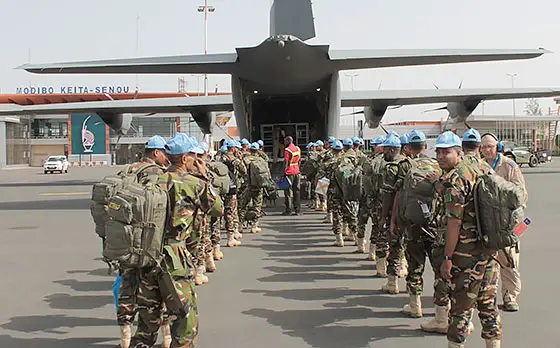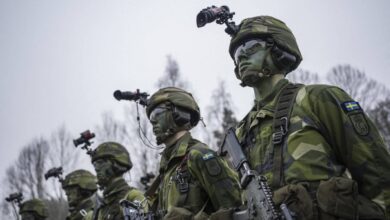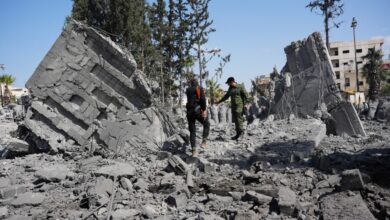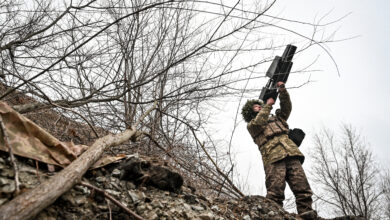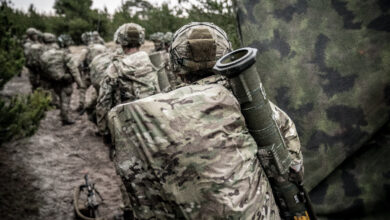Denmark plans to boost military contributions to Syria, the Sahel and NATO
Government also looking at a Danish naval contribution to a European-led international naval mission in the Strait of Hormuz
Citing global instability and its duties as a member of NATO, the Danish government announced that it plans to boost military contributions to a number of missions around the world.
After consulting with the Danish parliament’s Foreign Policy Committee, Prime Minister Mette Frederiksen, Foreign Minister Jeppe Kofod and Minister of Defence Trine Bramsen said that the Danish military would send support to the Global Coalition against Islamic State in northeast Syria, the United Nations peacekeeping mission in Mali, France’s mission in the Sahel, and a U.S. aircraft carrier group in the north Atlantic and Mediterranean, in addition to increasing its contribution to NATO.
The government will make the relevant resolutions for parliamentary approval, a Friday, September 6 defense ministry release said.
Denmark also welcomed a possible deployment to an international maritime effort in the Strait of Hormuz.
“We are looking into the possibility of a Danish naval contribution in an international European-led effort,” Frederiksen said.
The United Kingdom in July called for “a European-led maritime mission” in the Persian Gulf region, as tensions soared with Iran over seizures of oil tankers. France has also pushed for a European mission to protect shipping, but has ruled out the U.S.-proposed Operation Sentinel international coalition. Other European states have been reticent about the U.S. plan.
Frederiksen said a European-led operation “should not be regarded as an alternative to the American presence, but as a supplement.”
Medical team for northeast Syria
Denmark will send a 14-member medical team to northeast Syria, where the U.S.-led Coalition-backed Syrian Democratic Forces alliance controls a swath of territory captured from ISIS.
The team will include doctors, nurses, therapists and support staff to provide trauma care at a Coalition base, Xinhua news agency reported.
Denmark has previously sent transport and fighter aircraft, special operations forces and troops to advise the Iraqi Security Forces, as part of the Coalition’s mission.
In a Friday statement, the U.S. Defense Department said it welcomed Denmark’s contribution “to share the burden” in northeast Syria.
“As a founding member of the Global Coalition to Defeat ISIS, this deployment demonstrates Denmark’s continued commitment to working with our partners, to include the SDF, to ensure ISIS cannot re-emerge,” Pentagon spokesperson Jonathan R. Hoffman said in an email.
“Our Danish partners will work with the residual U.S. military force in northeast Syria to support stability and security.”
The U.S. and Turkey agreed to establish a security zone along Syria’s northeastern border to manage tensions between Turkey and Kurdish elements of the SDF, and joint patrolling of the buffer zone has recently begun.
A significant number of U.S. Special Operations Forces, alongside some British and French troops, remain in Syria’s northeast, where they trained and advised the SDF in the ground war against ISIS, but the U.S. has frequently called for other nations to deploy personnel after President Donald Trump announced the withdrawal of American troops from the country in December.
Special Envoy for Syria James Jeffrey told the U.S. Congress in May that Coalition member nations had been “stepping up” but said in July that no “formal commitments” had been received.
The Danish plan marks the first public commitment to send additional personnel to Syria, although a European diplomatic source told The Defense Post in June that France and the United Kingdom have committed an incremental troop increase, but that they are not intended to serve as a border force.

Helicopters for Operation Barkhane in the Sahel
For the first time, Denmark will also send a “helicopter contribution of up to 70 people and one-to-two staff officers” to France’s Operation Barkhane in sub-Saharan Africa’s troubled Sahel region.
Barkhane has mandate for counter-terrorism operations across the Sahel, and focuses activity in insurgent-hit Mali, Burkina Faso, Niger.
Colonial power France intervened militarily in Mali in 2013, launching Operation Serval after extremists linked to al-Qaeda exploited an uprising by Tuareg rebels to take key cities in the desert north. That mission in 2014 morphed into Operation Barkhane, comprised of some 4,500 French troops supported by helicopters from the U.K. and 50 Estonian troops.
The Danish government announced its plan to send two transport helicopters to the French mission back in February, pending parliamentary approval. Denmark previously provided a transport aircraft to Serval in 2013, but the country has not previously contributed to Barkhane.
The U.K. announced in July it would extend its Chinook helicopter support by at least six months, and Estonias defense ministry is reportedly seeking to nearly double its troop contribution to the France-led mission.
“It is crucial for Danish and European security that we contribute to the stability of the area. The terrorist groups in the Sahel region threaten our common security,” then-foreign minister Anders Samuelsen said in a statement at the time.
“When we make new military contributions in the Sahel region and in Syria to the fight against ISIL, it is about more than immediate firefighting,” Foreign Minister Kofod said Friday.
“We are working across several fronts to create security, stability, and – in the long term – a positive development in the immediate neighborhoods of Europe,” Kofod said.
C-130J transport for MINUSMA in Mali
Denmark will also send transport aircraft along with approximately 65 personnel as well as a staff contribution of up to 10 to MINUSMA, the United Nations stabilization mission in Mali.
Launched in 2013, MINUSMA is considered one the most dangerous U.N. peacekeeping missions, and attacks against blue helmets in the center and north of the country are common. More than 200 people deployed to MINUSMA have died, including 18 this year. Around 14,500 personnel are deployed to the mission, according U.N. figures for July.
Denmark has supported MINUSMA since 2014, including by sending special operations troops in 2016, and a C-130J transport aircraft, most recently in 2017. A Danish Major General was MINUSMA Force Commander from March 2015 to December 2016.
The latest aircraft deployment is part of a plan agreed with Belgium, Norway and Portugal to rotate transport aircraft coverage, and Denmark is to cover the period from November 2019 to May 2020 with a C-130J, according to the defense ministry. The four countries along with Sweden also run and guard a camp.
Danish deployment to NATO
Denmark will also and send a total of around 700 personnel to NATO missions, including a combat battalion, a “larger warship” and four fighter aircraft “to strengthen NATO’s deterrence and defense profile,” Bramsen said,
The four F-16 jets along with around 60 personnel will deploy later this year to an air base in in Siauliai, Lithuania, as part of NATO’s Baltic Air Policing operation. Denmark has contributed jets to the mission six times, most recently from January to April 2018.
Around 200 personnel are expected to deploy later this year or in early 2020 to a British-led battlegroup as part of NATO’s enhanced Forward Presence in Estonia, the Ministry of Defence said in February.
The enhanced Forward Presence consists of four multinational battalions, one each in Estonia, Latvia, Lithuania and Poland.
The 12 month-deployment to the Tapa army base in Estonia will also see Danish staff officers deployed to the 1st Estonian Brigade and the British-led multinational battalion there. Staff officers will also deploy to the enhanced Forward Presence Command at the British headquarters in the capital Talinn.
In addition to contributing naval vessels to Standing NATO Maritime Group 1 in 2019, Denmark took command of Standing NATO Mine Countermeasures Group 1, providing command staff, a flagship and mine clearing assets. In February the Ministry of Defence said it would contribute naval vessels to SNMG 1 and SNMCMG1 in 2020.
Denmark will also send a frigate to accompany a U.S. Navy carrier group on an upcoming deployment to the Mediterranean and north Atlantic for three months.
“This is done to strengthen maritime security, but also to build even stronger operational and close cooperation in the U.S.,” Bramsen said, according to Xinhua.

